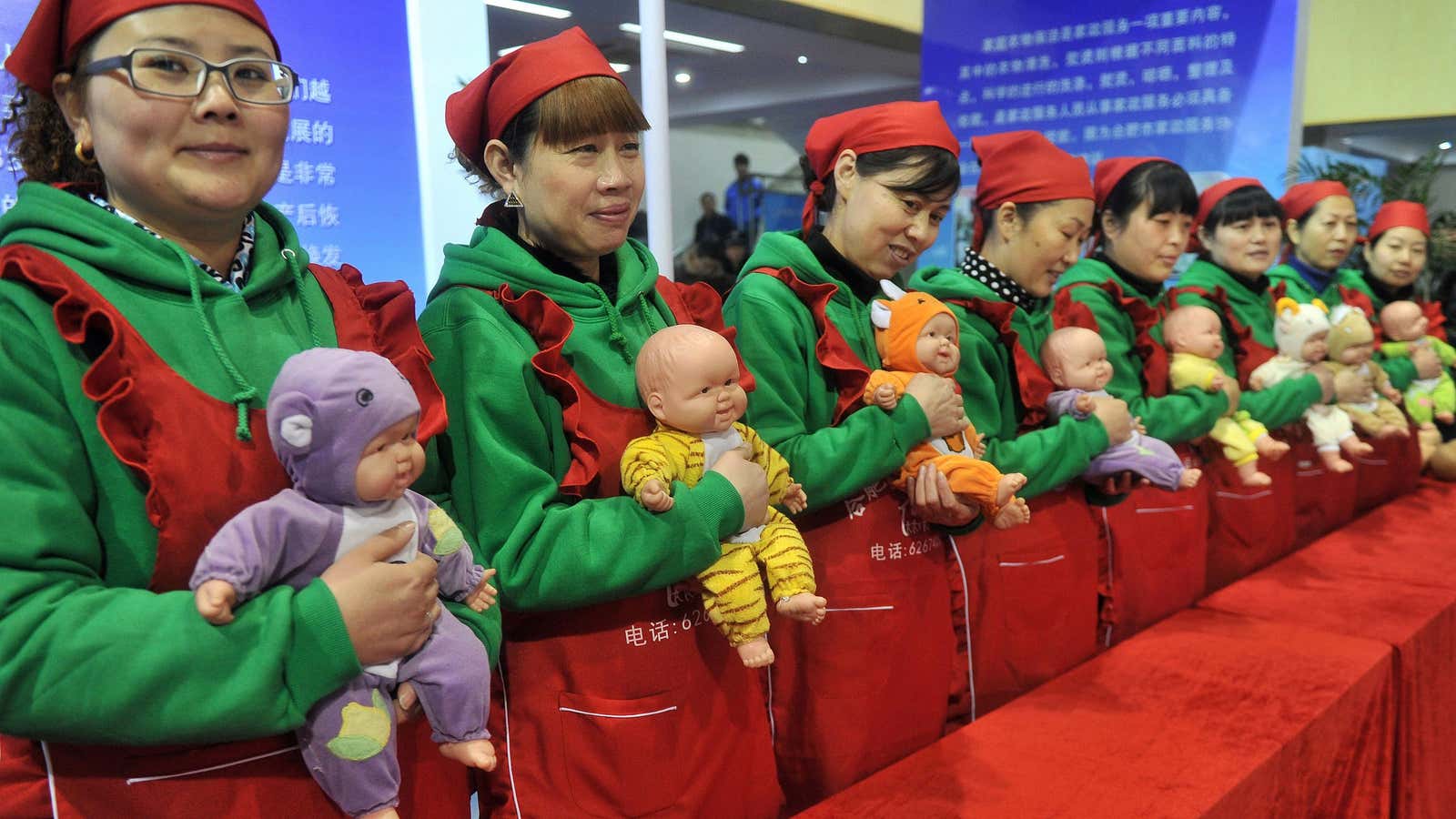People in China may soon be free to have any number of kids they want after four decades of strict limits. Yet makers of diapers, infant milk and other children’s products may not see the sustained baby boom they’re hoping for.
China first restricted births for most families to one child starting in 1979. Forty years later, with one of the lowest fertility rates in the world and a declining working-age population, it announced in late 2015 it was relaxing the policy to allow all families to have two children. Now the State Council, China’s cabinet, could scrap limits entirely as soon as by the end of the year, Bloomberg reported on Monday (May 21), citing unnamed sources. Some Chinese baby product makers saw their prices go up as much as 10% after the report, Bloomberg said.
Certainly, in 2016, when the two-child policy went into effect, China saw a spike in births. That year, China had 18.46 million live births—the highest number since 2000—an 11.5% increase from the previous year. Nearly half of the babies born in 2016 had at least one older sibling, suggesting the new policy was likely responsible.
But the following year, the number of live births fell 3.5% to 17.23 million. Demographic data—and people’s own stated preferences—suggest there are several factors working against a long-term baby boom.
For starters, China has to work against the momentum created by its past birth-control rules, a stunning success at stopping runaway population growth. The country’s population now stands at 1.39 billion (link in Chinese) and is expected to peak at around 1.45 billion in 2030.
As a result, the population of women of reproductive age is declining drastically. Meanwhile, the combination of the one-child policy and the country’s cultural preference for boys also means that China has about 30 million more men than women. Many of them may never marry or start a family.
For women, this imbalance means everyone who wants to marry, probably could—but the desire to marry is no longer a given. Despite the Chinese government’s exhortations about “leftover women,” meant to shame them into marriage, women in China are delaying marriage and pregnancy, often to focus on work. Social norms that still see much of the childcare burden placed on women, along with caring for the elderly, are also a disincentive.
In recent years, China’s seen marriage rates decline and divorce rates rise. People who aren’t married are less likely to have children because those who born to single parents in China often find it hard to register for social welfare.
A 2017 online poll (link in Chinese) of working mothers by recruiting site Zhilian Zhaopin asked women with one child if they would like to have a second child. Last year, nearly 63% (link in Chinese) of the over 40,000 women surveyed by the site said they didn’t want a second child, citing career development goals and the high cost (link in Chinese) of raising a child, while that number was around 59% among the 14,300 working mothers surveyed by the same firm in 2016.
The truth is, it isn’t that easy to shift a society’s psychological feelings about how many children to have, whether you’re trying to get people to make fewer babies or more of them. Earlier this year, of the 120,000 people or so who responded to a Chinese social media survey (link in Chinese) conducted by a research group affiliated with a private real estate firm, 43% said they either wanted no children or just one child, and around 34% said they’d like to have two children. Though the two surveys aren’t directly comparable, Gallup research in the US found only 5% of respondents said no or one child was the ideal family size, while nearly half said two children was ideal.
